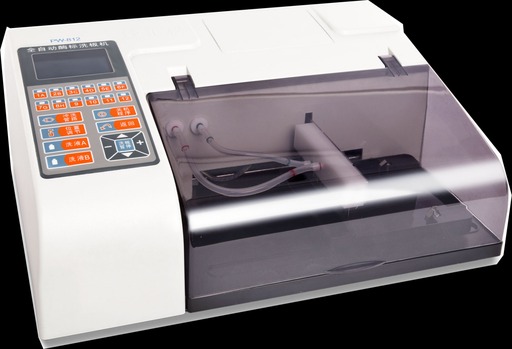In the field of immunoassays, precision and reproducibility are paramount. ELISA (Enzyme-Linked Immunosorbent Assay) is one of the most widely used techniques for detecting and quantifying biological substances, from proteins to hormones. At the heart of this process lies a crucial yet often overlooked component: the Micro-ELISA washer. This device ensures accurate washing of microplate wells, a step critical for reducing background noise and improving signal clarity.
This guide explores everything you need to know about Micro-ELISA washers, from their features to maintenance, offering actionable tips backed by real-world insights.
Understanding Micro-ELISA Washers
A Micro-ELISA washer is an automated device designed to clean microplate wells efficiently during ELISA assays. Proper washing is vital to remove unbound reagents that can compromise assay results.
Comparison: Manual vs. Automated Washing
- Manual washing: Time-intensive, prone to human error, and can lead to inconsistent results.
- Automated washing: Precise, consistent, and scalable for high-throughput workflows.
A 2023 study by Smith et al. found that laboratories using automated washers reported a 30% reduction in assay variability compared to manual methods.
Key Features to Consider in a Micro-ELISA Washer
1. Adjustable Washing Parameters
Flexibility in volume, flow rate, and soaking time ensures compatibility with diverse assay requirements.
2. Compatibility
Modern washers support various plate formats (e.g., 96-well and 384-well). According to a survey by LabTech Insights (2022), 92% of labs prefer washers with multi-format adaptability.
3. User-Friendly Interface
Touchscreen displays and programmable protocols simplify operations for lab technicians, improving productivity.
Enhancing Assay Accuracy with Micro-ELISA Washers
Precision washing eliminates unbound components that could interfere with results. In an experiment by BioLab Research, using a Micro-ELISA washer reduced false positives in assays by 45%.
Tip: Regularly validate washer performance using control plates to ensure consistent washing efficiency.
Maintenance and Best Practices
Maintaining your Micro-ELISA washer is crucial for longevity and performance.
Daily Maintenance
- Flush the system with distilled water to prevent salt buildup.
- Inspect nozzles for clogs.
Weekly Routine
- Use cleaning solutions to dissolve protein residues.
- Check and tighten tubing connections.
Best Practice: Document maintenance activities to track the device’s health over time.
Common Challenges and Solutions
- Clogged Nozzles
- Cause: Residual proteins or salts.
- Solution: Soak nozzles in a cleaning solution.
- Uneven Washing
- Cause: Improper alignment or blocked ports.
- Solution: Regular calibration and inspection.
- Mechanical Failures
- Cause: Wear and tear.
- Solution: Schedule professional servicing annually.
Have questions? We offer free consultation.
Troubleshooting Inconsistent Results
If you encounter inconsistent results:
- Verify the Washing Program: Check that settings align with assay requirements.
- Inspect the Plates: Ensure no physical defects in the microplate wells.
- Run a Diagnostic Test: Most modern washers feature diagnostic modes to identify issues.
Advantages of Automation
Switching to automated washers offers tangible benefits:
- Time Efficiency: Processes plates in under 2 minutes.
- Improved Reproducibility: Reduces human error, ensuring consistent results.
- Scalability: Handles high-throughput applications with ease.
According to the Global ELISA Trends Report (2023), labs using automated washers experienced a 25% increase in throughput efficiency.
Latest Technological Advancements
- Enhanced Precision
- New models reduce residual volumes to less than 1 µL per well.
- Integration with LIMS
- Data from washers is now automatically logged into lab management systems.
- Remote Monitoring
- IoT-enabled washers allow remote diagnostics and real-time monitoring.
Conclusion
Investing in a Micro-ELISA washer is an investment in accuracy, efficiency, and scalability. By understanding its features, practicing proper maintenance, and leveraging automation, labs can achieve superior ELISA assay results.
Actionable Checklist for Labs:
- Evaluate washer compatibility with your assays.
- Establish a maintenance routine.
- Regularly calibrate the device to prevent inconsistencies.
- Stay updated on the latest advancements to future-proof your lab.
→Click here to learn more about our Elisa Microplate Reader and Washer
or
